
Roots Unearthing Textured Hair’s Beginnings
Consider, if you will, the intimate narrative etched into each coil and twist of textured hair. It holds more than just a biological blueprint; it carries the whisper of generations, a living archive spun from the very soil of ancestral lands. For those whose lineage traces through Africa and its diaspora, hair was never a mere adornment. It served as a profound repository of memory, a chronicle of identity, and a sacred link to communal heritage.
Our exploration here begins at the source, acknowledging hair as the earliest parchment upon which stories of resilience and culture were inscribed, a tangible connection to the past woven into the fabric of daily life. This is not some distant academic exercise; it is an invitation to witness the ongoing vitality of these ancient practices that continue to shape understandings of self and belonging.
The unique attributes of highly coiled hair, with its spring and inherent volume, provided a versatile medium for artistic and communicative expression across African societies for millennia. Its capacity for various formations made it ideal for conveying social signals, often more immediate than spoken word. These ancient understandings, though not couched in modern scientific terms, intuitively grasped much about the hair’s structure and its environmental responses.
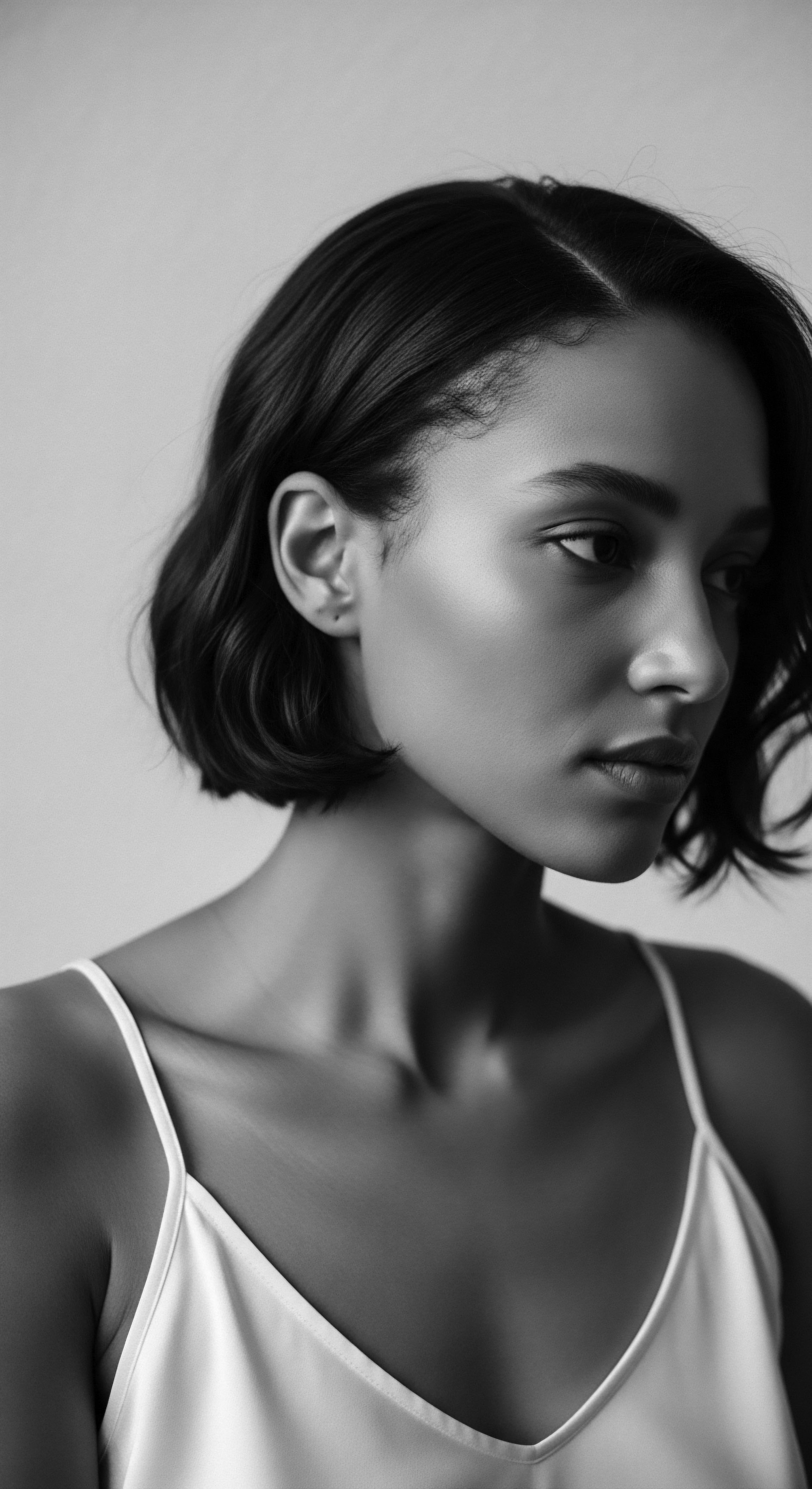
Anatomy’s Ancient Echoes
From a biological standpoint, textured hair displays a distinctive follicular morphology. Unlike straight strands, which emerge from round follicles, coiled hair often originates from oval or elliptical follicles, causing the strand itself to flatten and twist as it grows. This helical structure is what gives textured hair its characteristic curl pattern, from loose waves to tight, springy coils. The points where these twists naturally occur are areas of inherent fragility, requiring particular attention and gentle care.
Ancestral practices, honed over centuries, recognized these characteristics. They understood, without microscopes, the need for protective styling to mitigate breakage and preserve length. They developed methods that respected the hair’s natural inclinations, working with its tendency to shrink and coil rather than against it.
The hair shaft itself, a marvel of protein filaments, finds protection in its outermost layer, the cuticle. In textured hair, these cuticles tend to lift slightly more than in straighter types, allowing for greater moisture absorption, yet also rendering it more prone to dehydration. This biological reality underpins countless ancestral conditioning rituals, designed to imbue the hair with natural oils and emollients drawn from the land. These daily acts of care were, in essence, early forms of applied science, passed down through touch and oral tradition.
Each hair strand, a living testament, carried within its very form the story of a people and the wisdom of their land.
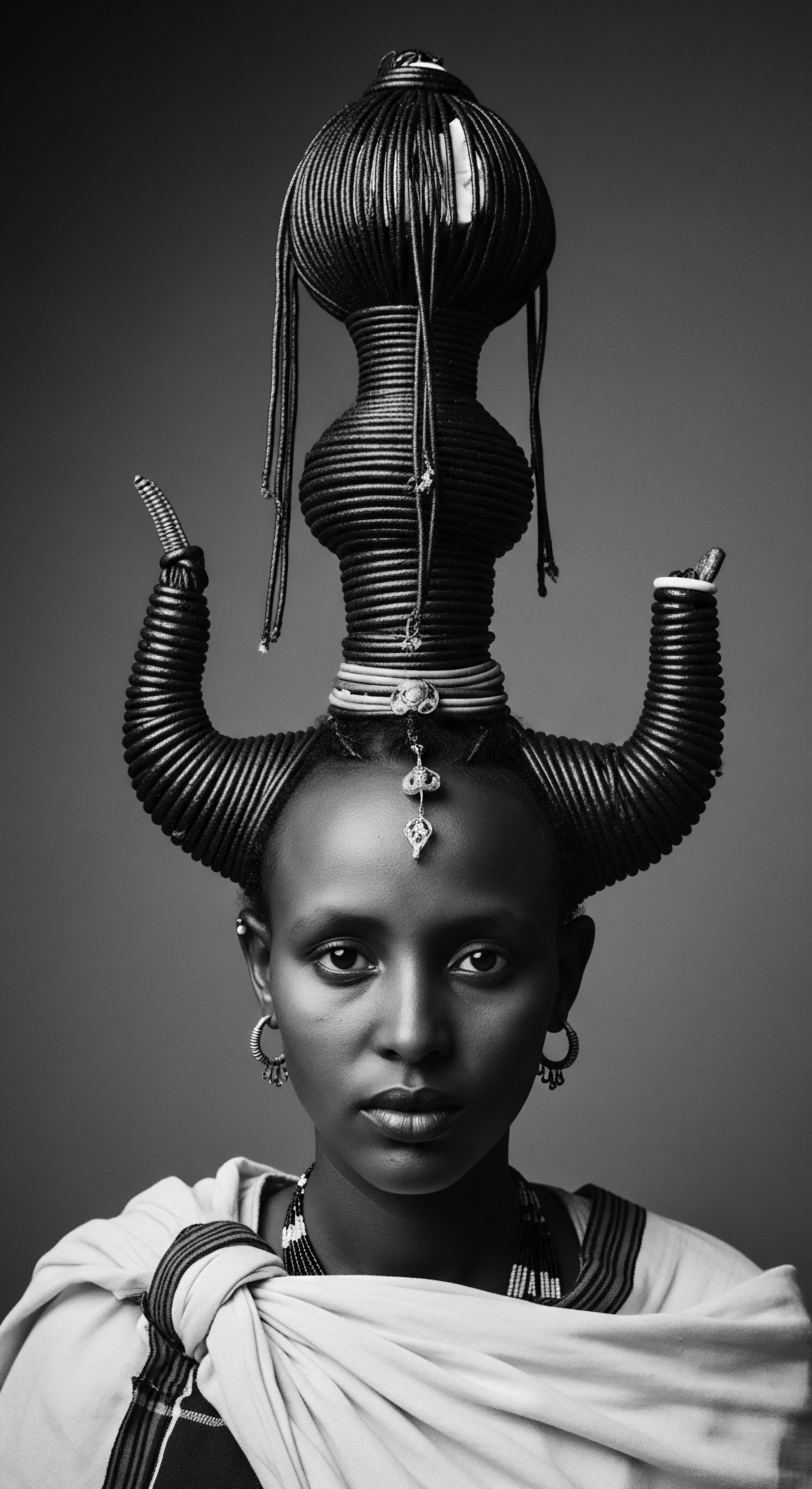
How Did Early Societies Classify Textured Hair?
Traditional African societies did not possess formal, scientific classification systems akin to modern trichology. Their methods, however, were far richer in cultural context. Hair texture and style served as visual markers, a profound and immediate language. These classifications were rooted in community roles, life stages, spiritual beliefs, and tribal affiliations.
A person’s coiffure could indicate marital status, social standing, age, or even their village of origin. This communal understanding predated any scientific attempt to categorize hair by curl pattern or diameter. For instance, among many West African groups, specific braided patterns or shaved sections would signify a girl’s transition into womanhood, a warrior’s readiness for battle, or a widow’s period of mourning. This fluid, living classification system ensured that hair was consistently imbued with social and spiritual meaning, extending beyond its physical attributes.
- Tribal Affiliation ❉ Distinctive styles identified individuals with specific ethnic groups, fostering community recognition.
- Social Standing ❉ More elaborate or specialized hairstyles could signify leadership roles, wealth, or a particular profession.
- Life Milestones ❉ Changes in hair design often marked rites of passage, such as birth, puberty, marriage, or bereavement.
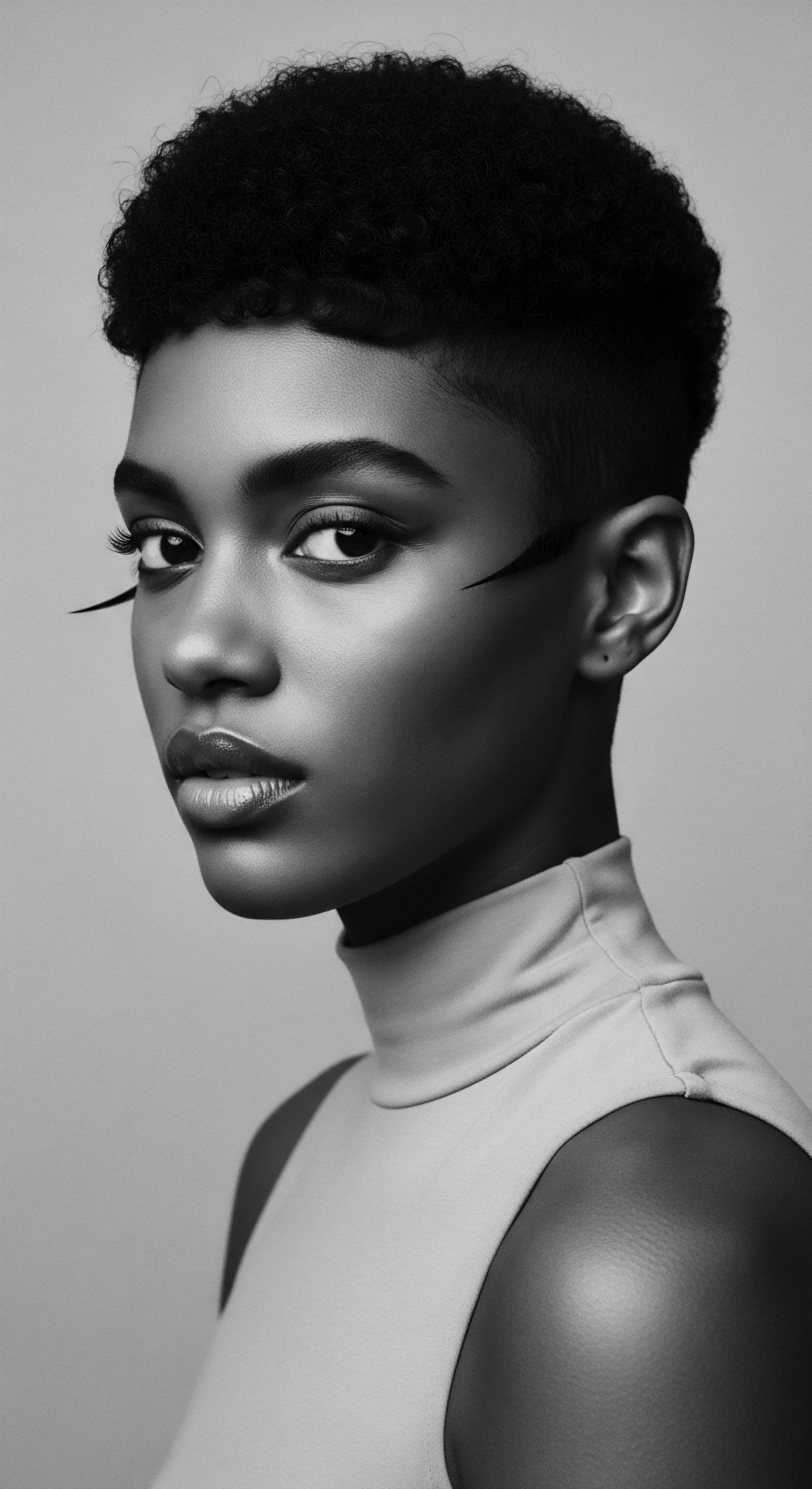
The Ancestral Lexicon of Hair
The language surrounding textured hair in ancestral communities was rich with terms that conveyed not only physical attributes but also cultural significance. While modern parlance includes terms like ‘kinky,’ ‘coily,’ or ‘afro-textured,’ traditional societies used descriptors that often reflected the hair’s sacred connection to identity and natural forms. Consider the myriad ways hairstyles were named after animals, plants, or cosmological phenomena, reflecting a deep respect for the natural world and its cycles.
The very act of naming a style tied it to a shared cultural understanding. Such lexicons were orally transmitted, part of the living heritage.
The absence of a written language for hair in many ancient contexts did not diminish its importance. On the contrary, it elevated hair to a visual communication system, an unspoken dialogue among community members. These physical expressions served as a living glossary, understood and practiced by all. The knowledge was encoded not in books, but in the hands that styled, the heads that were adorned, and the eyes that recognized the subtle cues.

Hair’s Growth Cycles in the Ancestral Lens
Hair growth, like all biological processes, follows a cyclical pattern of growth, rest, and shedding. Ancestral cultures, through keen observation, understood these rhythms. They knew that hair growth was influenced by diet, climate, and general wellbeing. Traditional diets, rich in local produce, lean proteins, and natural fats, supported robust hair growth.
Environmental factors also played a role; the warm, often humid climates of many African regions provided conditions conducive to moisture retention, aiding the hair’s health. Conversely, periods of drought or scarcity would influence hair’s vitality, a phenomenon understood as a reflection of the body’s overall state.
Beyond the physiological, ancestral communities also viewed hair growth through a spiritual lens. Hair, growing from the crown, was seen as a conduit to divine wisdom and spiritual connection. The act of tending to hair, therefore, became a ritual of alignment, a way to ensure both physical and spiritual prosperity. This worldview ensured that hair care was never isolated from the broader context of human flourishing and ancestral connection.
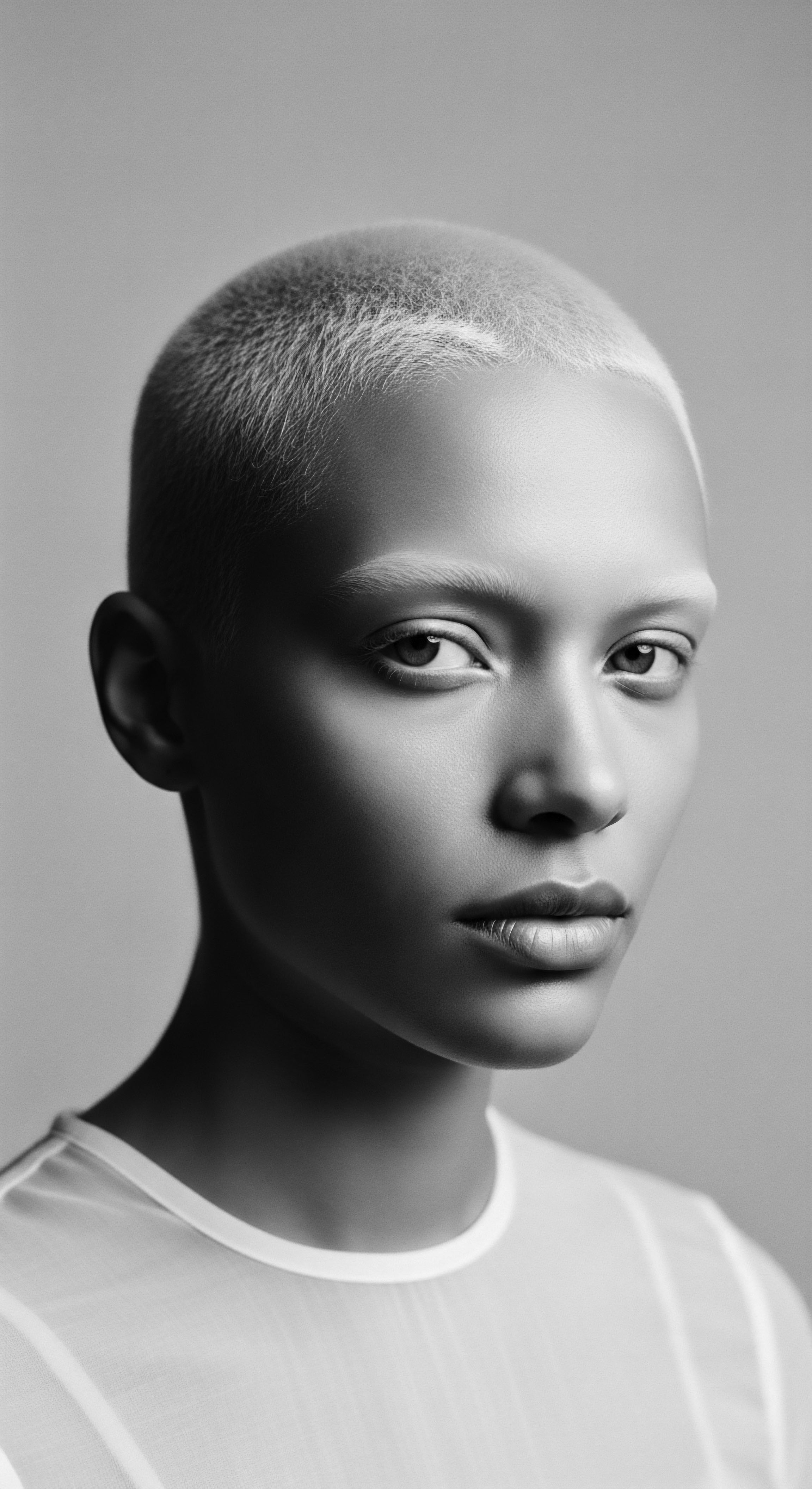
Ritual The Artistry of Styling and Heritage
The journey of textured hair through ancestral practices is a testament to ingenious artistry. Styling was never a static act; it was a dynamic expression of identity, a performance of community, and a means of cultural transmission. The tools and techniques employed were born from generations of observation, adaptation, and an intimate dialogue with the hair itself.
From the earliest communal gatherings to the private moments of self-adornment, these rituals were deeply rooted in heritage, each gesture carrying layers of meaning. They speak of a profound understanding of hair’s physical properties, combined with an intuitive grasp of its social and spiritual weight.

Ancestral Roots of Protective Styles
Protective styling, a widely recognized concept today, finds its profound origins in ancestral practices aimed at preserving hair health and communicating social messages. Styles such as braids, twists, and cornrows, seen across myriad African societies for millennia, were more than aesthetically pleasing. They shielded hair from environmental exposure, reduced breakage, and retained moisture, thus promoting length and strength. These practices were especially significant in communities where agricultural work or daily chores exposed individuals to harsh elements.
Beyond practicalities, these styles were symbolic. For instance, in many West African cultures, intricate cornrow patterns could communicate a person’s age, social status, or even their marital eligibility. These styles, often requiring hours of communal effort, were living embodiments of social connection and shared heritage. The systematic shaving of hair by enslavers during the transatlantic slave trade aimed to strip Africans of these vital cultural markers, severing a fundamental link to their heritage and identity (Byrd & Tharps, 2014). Yet, the resilience of these practices persisted, finding new forms of expression and resistance in the diaspora.
| Traditional Significance Social Status |
| Example Ancestral Practice Elaborate headwraps or elevated styles for royalty/elders |
| Contemporary Relevance Formal updos for professional or celebratory events |
| Traditional Significance Tribal Identity |
| Example Ancestral Practice Specific braiding patterns or use of ochre in Maasai hair |
| Contemporary Relevance Wearing specific ancestral styles to connect with heritage groups |
| Traditional Significance Life Passage |
| Example Ancestral Practice Hair styling rituals for puberty, marriage, or mourning |
| Contemporary Relevance Adopting a new style to mark a personal milestone or transformation |
| Traditional Significance Communication/Survival |
| Example Ancestral Practice Braiding rice seeds into hair during forced migration (Afriklens, 2025) |
| Contemporary Relevance Hair as a statement of identity, resistance, or community (e.g. natural hair movement) |
| Traditional Significance Ancestral hair practices provided a rich language, with meanings enduring and shifting across time and space. |

Natural Styling and Heritage Methods
The spectrum of natural styling techniques rooted in heritage is expansive, extending far beyond simple manipulation. These methods embraced the hair’s natural curl and coil, working to define and celebrate its inherent structure. Techniques like finger coiling, knotting, and various forms of braiding were not merely about aesthetics; they served practical purposes of keeping hair organized, minimizing tangles, and promoting healthy growth. The use of natural elements such as clays, plant extracts, and oils provided both hold and nourishment, creating a symbiotic relationship between hair care and the earth’s offerings.
Consider the technique of Bantu Knots, traceable to the 2nd millennium BCE among Bantu-speaking communities in Southern West Africa (BLAM UK CIC, 2022). This method of coiling sections of hair into tight, spiraled buns not only created a distinctive look but also stretched the hair without heat, preserving its integrity. When unfurled, these knots revealed beautifully defined curls, showcasing an early understanding of setting techniques. The persistence of such methods across centuries speaks to their enduring efficacy and their deep cultural resonance, linking contemporary practice back to ancient wisdom.
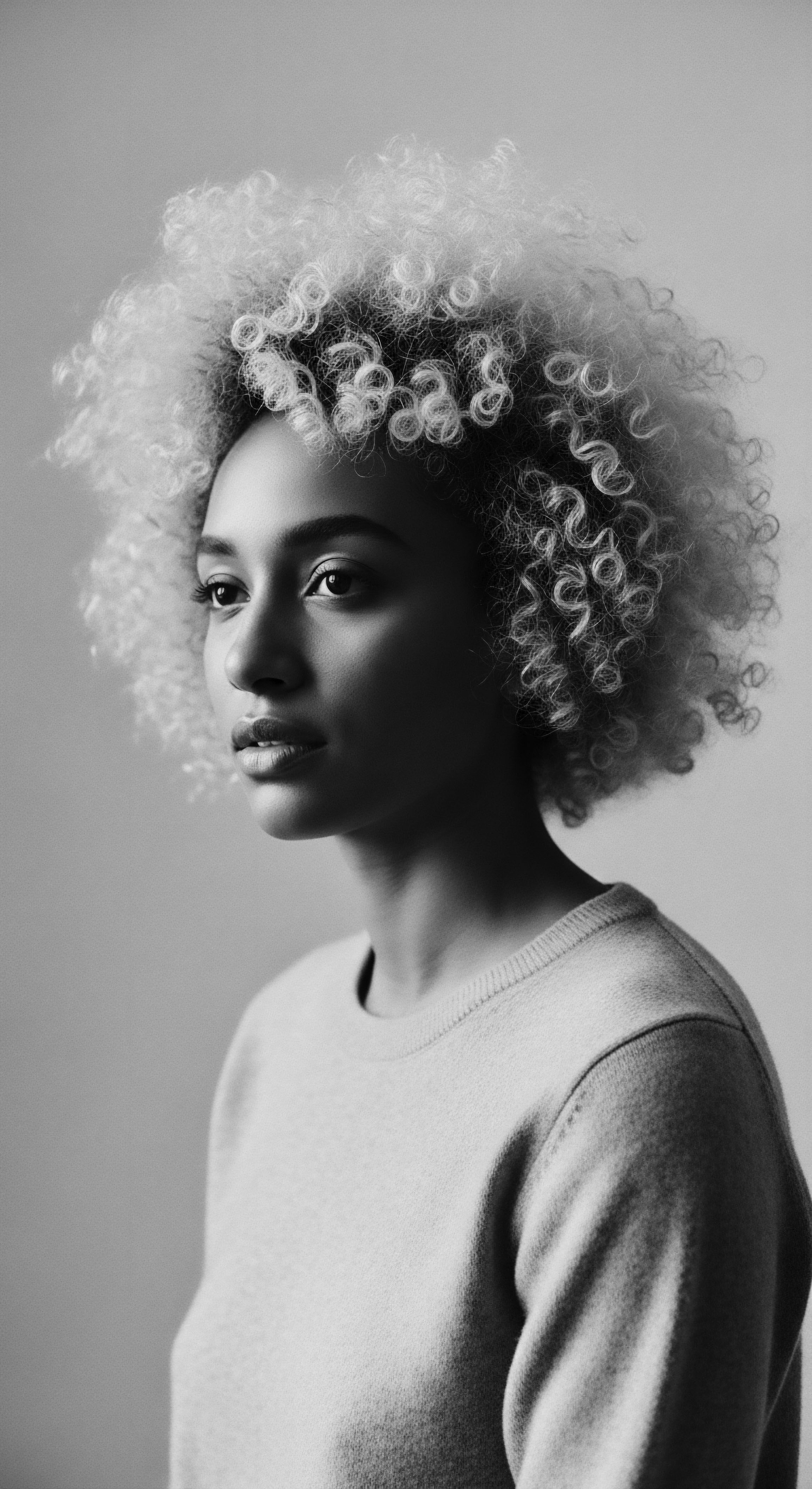
The Ancestry of Hair Adornments
Hair adornments, from beads and cowrie shells to precious metals and dyed fabrics, were integral to ancestral hair practices. These embellishments were rarely purely decorative. They served as visual codes, reflecting social status, wealth, spiritual beliefs, or even a person’s life journey. The placement and type of adornment could speak volumes about the wearer’s position within their community.
For example, specific beadwork might signify a woman’s marital status or the number of children she had. These elements became part of the hair’s story, adding layers of meaning to each style.
The ancestral toolkit was simple yet remarkably effective, comprising materials readily available from the natural environment. Combs carved from wood or bone, sometimes intricately decorated with symbolic motifs, were not just detangling devices. They were often sacred objects, passed down through families, embodying lineage and historical connection. These tools, designed with wider teeth and rounded tips, were perfectly suited for the specific needs of coiled hair, a clear testament to specialized traditional knowledge (Johnson & Bankhead, 2014).
Other implements might include specialized needles for intricate braiding, or natural gourds for mixing conditioning treatments. The deliberate creation and use of these tools underscored the intentionality and reverence with which hair was approached.
Hair became a living canvas, each style and adornment a brushstroke telling a story of belonging and resilience.
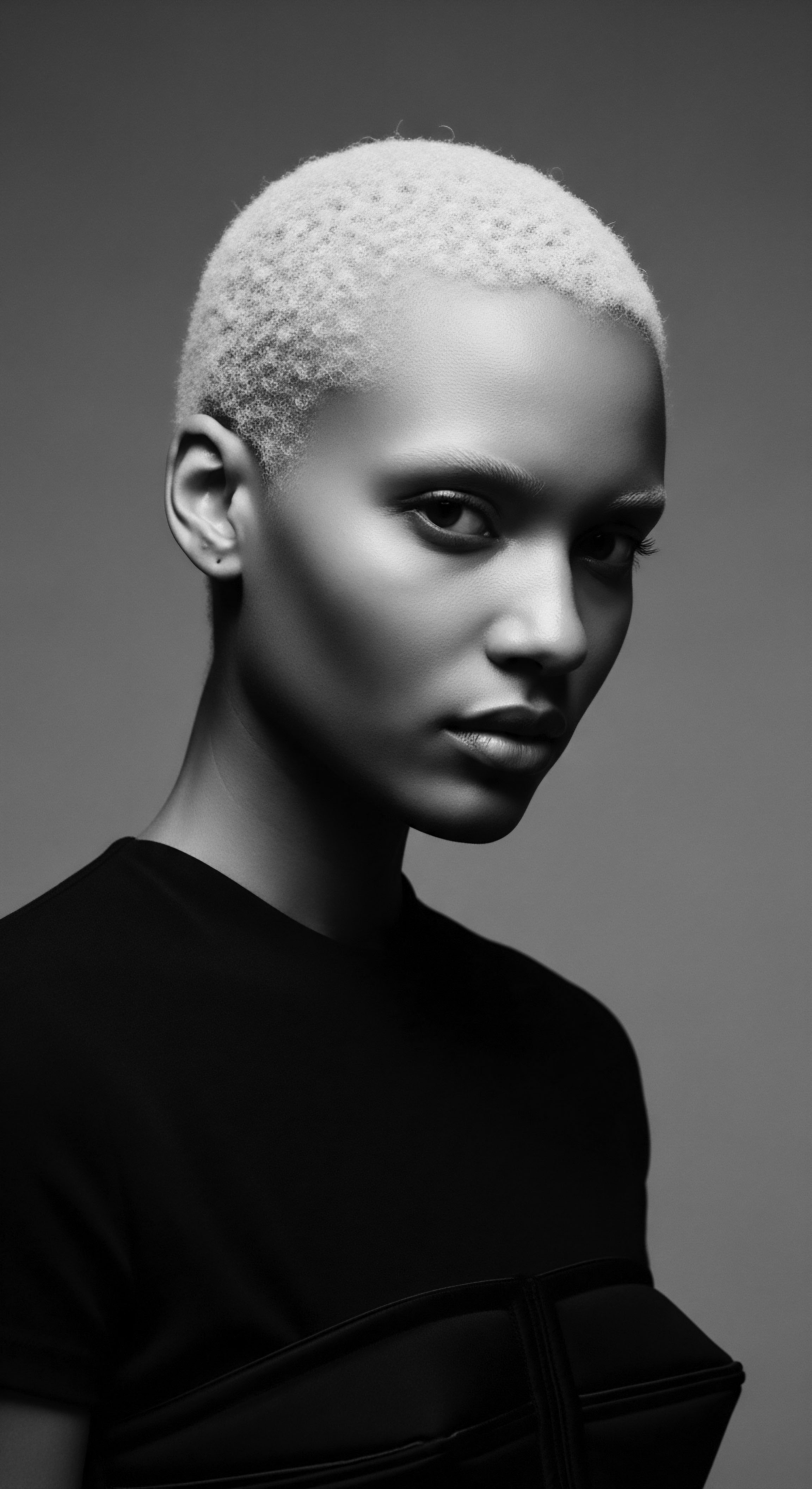
Heat’s Historical Place in Hair Care?
While modern heat styling often involves high temperatures and can risk damage, ancestral societies utilized heat in ways that were often more gentle and purposeful. Sun drying, for instance, was a common method to set styles or dry hair after washing, harnessing natural energy. For certain preparations, gentle warmth might have been applied, perhaps through warmed stones or natural embers, to prepare oils or facilitate the application of hair treatments. These methods were integrated into holistic care systems, where the preservation of hair’s natural health was paramount.
The concept of altering hair texture with extreme heat, as seen in later periods with hot combs and chemical relaxers, arrived largely with colonial influences and the imposition of Eurocentric beauty standards. The early 1900s saw the widespread promotion of the hot comb, a tool that allowed for temporary straightening, often as a means to navigate societal prejudices and gain acceptance in workplaces and schools (Noma Sana, 2024). This historical shift highlights a deviation from ancestral practices that prioritized working with, rather than forcibly changing, the hair’s inherent texture.

Relay Regimens of Radiance, A Legacy Shared
The enduring legacy of ancestral hair practices lives vibrantly in the modern world, demonstrating how deep heritage informs contemporary care. These practices were never isolated acts of personal grooming; they were comprehensive systems interwoven with wellbeing, community, and the practicalities of daily existence. The wisdom passed through generations regarding hair health, protection, and problem-solving continues to provide foundational principles for cultivating thriving textured hair today. This continuity speaks to the profound understanding ancient communities held about the biological needs of hair and its integral connection to the human spirit.

How Ancestral Wisdom Guides Modern Regimens?
Building a personal textured hair regimen today can still draw profound lessons from ancestral wisdom. While modern science provides insights into molecular structures and chemical reactions, the core principles of ancestral care revolved around nourishment, protection, and gentle handling. These age-old practices instinctively addressed the specific needs of coiled hair ❉ its tendency towards dryness, its fragility at the points of curl, and its susceptibility to shrinkage. An effective ancestral regimen prioritized deep conditioning using natural emollients, protective styling to shield delicate ends, and regular cleansing that respected the scalp’s natural balance.
For instance, the practice of regularly oiling the scalp and strands, common in many African cultures, directly combats dryness and supports a healthy environment for growth. This is a direct parallel to modern pre-poo treatments or scalp massages using nourishing oils. The emphasis on gentle detangling, often with wide-tooth combs or fingers, also finds its roots in ancestral methods, preventing unnecessary breakage. These foundational principles of moisturizing, protecting, and detangling were not just sporadic acts; they formed a cohesive system of continuous care.

Nighttime Sanctuaries and Bonnet Wisdom
The importance of nighttime hair care, particularly the use of head coverings, possesses a deep ancestral lineage. Before the modern satin bonnet, various forms of fabric wraps and coverings were employed in African and diasporic communities to protect intricate hairstyles, preserve moisture, and maintain cleanliness while sleeping. This practice was not merely about maintaining a coiffure; it also served a hygienic purpose, protecting the scalp and hair from dust and debris.
The wrapping of hair before rest was a common custom, signifying care and respect for the hair’s integrity. These coverings created a miniature microclimate for the hair, shielding it from friction against rough sleeping surfaces and preventing moisture loss.
The silk or satin bonnet, a contemporary staple, functions on the same principle, reducing friction and preserving hair’s moisture content. Its widespread use today is a direct descendant of these historical practices, adapting traditional wisdom to modern materials. The continuity of this simple yet powerful ritual speaks to its enduring efficacy in promoting hair health and maintaining style, a testament to the ancestral understanding of hair’s vulnerability during sleep.

Traditional Ingredients for Textured Hair Needs
Ancestral communities were master formulators, drawing directly from the natural pharmacopeia around them to create potent hair treatments. Their understanding of botanical properties was intuitive, passed down through observation and experimentation. These ingredients addressed a range of hair concerns, from stimulating growth to adding sheen and providing protection.
Consider some key ancestral ingredients ❉
- Shea Butter ❉ Extracted from the nuts of the African shea tree, this rich butter was (and remains) a cornerstone of moisture and protection for coiled hair. Its emollient properties deeply hydrate and seal the cuticle, reducing dryness.
- Aloe Vera ❉ Found across many tropical regions, aloe vera’s gel-like consistency soothes the scalp, reduces inflammation, and offers a conditioning effect, acting as a natural humectant.
- Baobab Oil ❉ Derived from the seeds of the majestic baobab tree, this oil is renowned for its nourishing fatty acids, which condition and soften hair while promoting elasticity.
- Chebe Powder ❉ Originating from Chadian Basara women, this powder, a mix of various plant materials, is traditionally used to strengthen hair, reduce breakage, and promote length retention when applied as a paste.
These ingredients were not isolated. They were often combined in intricate formulations, sometimes infused with herbs or prepared through specific rituals that enhanced their efficacy and spiritual significance. The knowledge of their precise application and preparation formed a significant part of the cultural memory related to hair care.

Addressing Hair Concerns with Ancestral Wisdom
Ancestral communities faced hair challenges similar to those encountered today, albeit without the added stressors of modern chemical treatments or aggressive styling tools. Dryness, breakage, and scalp conditions were addressed through holistic approaches that combined internal and external remedies. Nutritional deficiencies were recognized as contributors to poor hair health, prompting the use of specific foods or herbal concoctions. Scalp irritation was treated with soothing plant extracts or antimicrobial ingredients.
The approach was always one of gentle restoration and long-term vitality. Instead of quick fixes, ancestral practices advocated for consistent, patient care that allowed the hair to return to its natural healthy state. This philosophy centered on understanding the body as an interconnected system, where hair health was a reflection of overall wellness.
For example, traditional healers might prescribe specific dietary changes or stress-reducing rituals alongside topical hair treatments, recognizing the interplay of mind, body, and spirit in maintaining vibrant hair. The very act of hair care was often communal, transforming a personal need into a shared experience, reinforcing social bonds and collective wellbeing.

Relay Deeper Understandings
The continuum of textured hair heritage stretches from ancient African villages to contemporary global communities, demonstrating an unbroken chain of memory preserved through daily practices. This living legacy offers a sophisticated framework for understanding the profound interplay of biology, culture, and identity. The depth of this connection transcends superficial notions of beauty, revealing hair as a profound cultural artifact—a medium through which entire societies have communicated, resisted, and thrived. To truly grasp how ancestral hair practices retained cultural memory, one must look beyond the surface and into the intricate layers of social function, spiritual significance, and historical resilience woven into each strand.

Hair as a Socio-Spiritual Language
In pre-colonial African societies, hair functioned as an elaborate, non-verbal language system, conveying a vast array of information about an individual’s standing within their community. This was a sophisticated form of communication, understood by all members of a society, far surpassing mere aesthetic preference. The arrangement of hair, the specific type of braids, the use of adornments, and even the hair’s length or absence, all spoke volumes. For instance, among the Wolof, Mende, and Yoruba people, hairstyles could precisely signify one’s marital status, age cohort, wealth, profession, or even their specific lineage (Johnson & Bankhead, 2014).
This granular level of detail embedded in hair styles meant that a glance could communicate more than many sentences. A young Wolof girl, for example, might have a partially shaved head to communicate she was not yet of marrying age. Such practices rendered hair a living document, a publicly displayed archive of an individual’s life journey and their place within the collective.
Beyond social roles, hair held immense spiritual significance. Many African cultures viewed hair as the highest point of the body, a sacred connection to the divine and ancestral spirits. It was considered a conduit for energy and a site of spiritual power. Because it grows towards the heavens, hair was often incorporated into rituals concerning birth, death, rites of passage, and healing (Mbilishaka, 2018a).
The act of hair grooming often involved trusted individuals, sometimes even religious or community leaders, further elevating its sacred status. The Tsimihety people of nineteenth-century Madagascar, for instance, chose not to cut their hair as a symbol of their independence, linking hair directly to freedom and self-determination (Boswell, 2016). This integration of hair into the spiritual and social fabric meant its care and styling were never mundane, but always purposeful acts of connection and preservation.
Ancestral hairstyles served as a living archive, communicating identity, status, and spiritual connection across generations.

The Resilience of Hair in the Diaspora
The transatlantic slave trade presented an unprecedented assault on the cultural memory embodied in African hair practices. The forced shaving of heads upon capture was a deliberate act of dehumanization, a calculated attempt to strip enslaved Africans of their identity, severing their visual ties to tribal affiliation, social status, and cultural heritage (Sieber & Herreman, 2000). Despite this profound trauma, the memory of hair practices persisted, adapting and transforming under extreme duress.
In the Americas, enslaved African women used their hair not only for survival but also as a means of covert communication and resistance. A widely documented example speaks to this resilience ❉ women braided rice seeds into their hair before being transported, ensuring the survival of staple crops and a piece of their homeland’s agricultural heritage (BLAM UK CIC, 2022). There are also accounts suggesting cornrow patterns were used to map escape routes, transforming hair into a living cartographic guide for liberation. These acts, performed in secret and passed down orally, stand as powerful testimonies to the enduring power of hair as a vessel for cultural memory and a tool for agency amidst oppression.
Later, during the Civil Rights and Black Power movements of the 1960s and 1970s, the Afro hairstyle resurfaced as a potent symbol of Black pride, self-definition, and political resistance. This was a deliberate rejection of Eurocentric beauty standards that had long denigrated textured hair. The Afro became a visual declaration of identity, a reclaiming of ancestral aesthetics in the face of persistent discrimination (Byrd & Tharps, 2014).
This period marked a collective re-engagement with ancestral roots, using hair as a public statement of defiance and celebration. The movement sparked a renewed interest in Afrocentric theory and cultural expression through hairstyles.

Science’s Validation of Traditional Methods
Modern hair science, with its advanced tools and understanding of molecular biology, increasingly validates the intuitive wisdom of ancestral hair care practices. The scientific community can now explain the ‘why’ behind methods that were simply ‘known’ to work for centuries. For instance, the understanding of hair’s cuticle layer and its tendency to lift in textured hair provides a scientific basis for the ancestral emphasis on rich, emollient oils and protective styling. These practices, once considered empirical, are now understood to effectively seal the cuticle, reduce moisture loss, and minimize mechanical damage.
Research into traditional ingredients reveals their precise chemical compositions and their beneficial effects on hair. The fatty acid profile of shea butter, the anti-inflammatory properties of aloe vera, or the strengthening components within Chebe powder can all be analyzed and understood through a scientific lens. This scientific validation helps to bridge the gap between ancient knowledge and contemporary understanding, reinforcing the authority and efficacy of practices rooted deeply in heritage. It also empowers modern practitioners to appreciate the profound scientific ingenuity embedded within ancestral traditions.
The very structure of textured hair, characterized by its unique curl patterns and the elliptical shape of its follicles, has been studied extensively. These studies affirm that its biomechanical properties differ from straight hair, requiring specialized handling and care. Ancestral practices, developed over millennia of living with and understanding this hair type, inherently provided this specialized care, long before scientific studies confirmed its necessity. The intergenerational transmission of these practices, therefore, acted as a remarkably effective, albeit informal, system of biological education and cultural preservation.

Reflection The Enduring Thread of Heritage
The exploration of ancestral hair practices reveals more than just historical beauty routines; it unveils a profound meditation on memory, identity, and the extraordinary resilience of a people. Each curl, each braid, each ritual shared across generations forms an unbroken thread, a living connection to the soul of a strand. Textured hair, in its diverse forms, has consistently served as a testament to continuity, a silent, eloquent chronicler of journeys both joyous and challenging. It holds the echoes of pre-colonial self-expression, the silent acts of resistance during periods of oppression, and the vibrant declarations of identity in movements for liberation.
This heritage is not static, a relic relegated to museum glass. It breathes in the hands that twist coils, in the conversations shared during styling sessions, and in the conscious choices to wear hair in its natural glory. It is a dynamic, evolving archive, continually written by each person who chooses to connect with these practices. The wisdom of those who came before us — their understanding of botanical remedies, their ingenious styling techniques, their recognition of hair as a spiritual anchor — remains a powerful wellspring of knowledge.
This inherited wisdom reminds us that care for our hair is care for our history, a profound act of honoring the legacy woven into our very being. In a world that often seeks to homogenize, our textured hair stands as a luminous declaration of unique heritage, a celebration of the enduring spirit that binds us to our past and propels us towards our future.
References
- Boswell, R. (2016). The heritage of hair ❉ stories of resilience and creativity. The Conversation .
- Byrd, A. D. & Tharps, L. I. (2014). Hair Story ❉ Untangling the Roots of Black Hair in America. St. Martin’s Griffin.
- Johnson, T. & Bankhead, T. (2014). Hair It Is ❉ Examining the Experiences of Black Women with Natural Hair. Open Journal of Social Sciences, 2, 86-100.
- Mbilishaka, A. M. (2018a). PsychoHairapy ❉ The psychology of Black hair and mental health in hair care settings. Journal of Black Psychology .
- Noma Sana. (2024). The History of Straightening Afro Hair ❉ Culture, Trends & Identity. Noma Sana Blog .
- Sieber, R. & Herreman, F. (2000). Hair in African Art and Culture. Museum for African Art.
- BLAM UK CIC. (2022). The history of Black Hair. BLAM UK CIC .
- Afriklens. (2025). How African Hairstyles Reflect Identity ❉ and Heritage. Afriklens .
